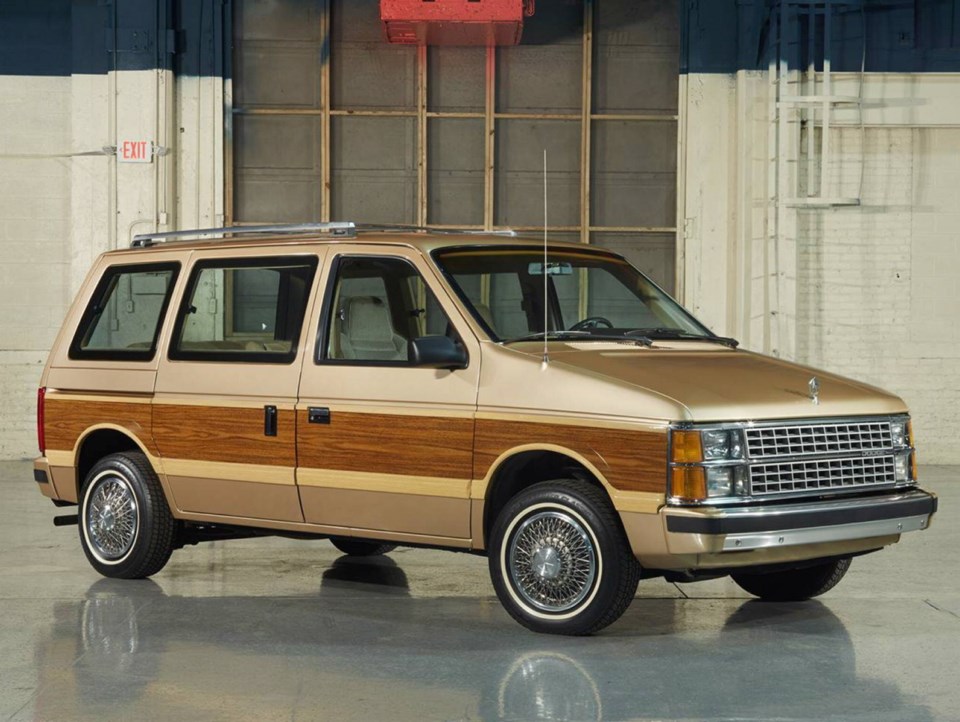Although Chrysler’s 1984 Dodge Caravan and Plymouth Voyager minivans were outstandingly successful vehicles, they were not the pioneer of the type; that honour belongs largely to Germany. Chrysler’s achievement was developing one that drove like a car and was convenient enough to largely displace the station wagon as the quintessential family hauler.
Others had tried the idea. American architect Buckminster Fuller (father of the geodesic dome), and engineer William Stout (of Ford Tri-Motor airplane fame) designed minivan-type vehicles.
Fuller’s 1933 Dymaxion had two wheels in front and one at the back. A rear-mounted Ford V-8 drove the front wheels. Steered by its rudder-like rear wheel, it could turn around in its own length. Only three were built.
Stout’s 1930s Scarab had a rear-mounted Ford V-8 driving the rear wheels. Its pontoon-shaped fenderless body and short hood gave enormous interior space, but it was not a commercial success, either.
Following the Second World War, the first real minivan was DKW’s Schnellaster (Karavan in North America) developed late in 1949. The Volkswagen Transporter/Microbus arrived a few months later and had greater sales success as a versatile economical people and cargo hauler.
Chevrolet responded a decade later with its 1961 rear-engine Volkswagen-influenced Greenbrier van, and Ford with its front-engine, rear-drive Econoline. Both were worthy Volkswagen competitors, but the Greenbrier ended in 1964 and the Econoline and later-arriving 1964 Dodge A100 van gradually grew out of the minivan class.
Although Volkswagen was the only real minivan again, it was still a niche vehicle. Large, customized commercial vans of the 1970s were killed by the second energy crisis, leaving the station wagon as the main family workhorse.
Chrysler changed that dramatically with its 1984 Caravan/Voyager, code-named T115 and nicknamed Magic Wagon. It was an immediate success. Although Toyota’s mid-engine, rear-drive Van had arrived a few months earlier, the Caravan/Vorager overshadowed it. Chrysler’s $660 million US for vehicle development and alterations to the Windsor plant would pay off handsomely.
Like Volkswagen, Chrysler mounted an existing car powertrain in one end; in this case the Dodge Aries/Plymouth Reliant K-Car’s cross-engine, front-drive engine/transaxle.
The boxy look was relieved by a short hood and sharply slanted windshield. The people and cargo mover’s versatile flat-floor interior accommodated up to seven passengers and 11 cubic feet of cargo (more with the rear seat folded or removed), all within the K-Car’s easy-to-park 4,470-millimetre length.
A right-side sliding door and full length hatch gave easy access. It provided a commanding view of the road, and at only 1631 mm high, it fitted the average suburban garage or car wash. A Dodge Mini commercial Ram Van without side or rear windows was also available.
The T115’s base 2.2-litre, overhead-cam, 101-horsepower inline four drove the front wheels through a standard five-speed manual or optional three-speed automatic transaxle. The optional, automatic-only 2.6-litre, 104-horsepower Mitsubishi balance-shafted four improved performance and smoothness, but proved prone to premature oil consumption.
Although a little quicker than the VW or Toyota, the T115 was no tiger. Road & Track recorded zero to 100 km/h in 14.7 seconds for the 2.6-equipped Voyager. The Toyota took 15.3 and the VW, 18.3.
R&T estimated the top speed at 164 km/h, significantly faster than the others. It got the performance it really needed in 1987 with the availability of a 3.0 litre V-6.
Chrysler’s minivan was such a success that it strained the sole-source Windsor plant to meet demand. Chrysler had the field virtually to itself for a decade, prompting Chrysler’s flamboyant chairman Lee Iacocca to crow: “We showed ’em how to do it, and they still couldn’t do it.”
Ford finally brought out its competitive Windstar in 1994, but there was a touch of irony in its arrival. In the 1970s, when Iacocca was president of Ford, he and chief product planner Hal Sperlich had developed a small garagable passenger van.
A prototype bearing a striking resemblance to the Chrysler T-115 was ready by 1975, but Henry Ford II vetoed it, apparently spooked by the 1973 oil embargo and a market swinging to smaller cars.
Iacocca was fired as Ford president in 1978 (not because of the minivan), and soon resurfaced as chairman of Chrysler. Among the Ford executives he attracted to Chrysler was his old Ford minivan buddy, Hal Sperlich.
They resurrected their minivan idea, and the T115’s arrival proved that Chrysler had not only survived its brush with bankruptcy in the early 1980s, it had become an innovative, versatile company.
Eventually, virtually all manufacturers offered minivans, but Chrysler remained the sales leader. While many buyers changed to SUVs and crossovers, the company that popularized the versatile minivan and introduced novel features like Stow-n-Go seats, continued to show the way.



